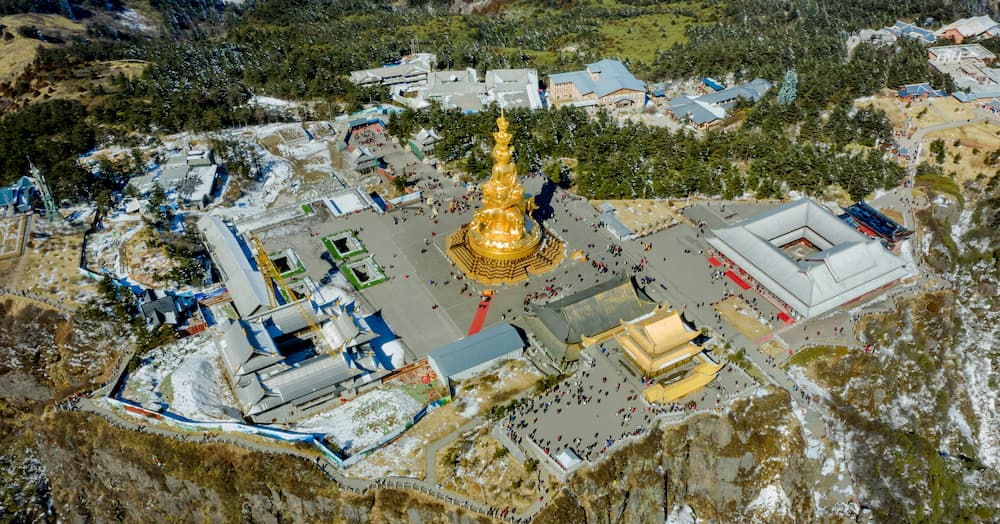
The Art of Chinese Buddhist Sculpture
Splendid
Chi Culture
Topic
The Art of Chinese Buddhist Sculpture
In ancient China, Buddhism was also called Xiangjiao (religion of images) for its extensive use of sculptural imagery to embody and spread its doctrines.
As with Buddhism itself, Buddhist sculpture originated in India and was introduced to China along different transmission routes over vast distances and time. As a result, there developed varying styles of Buddhist sculpture based on the three general forms of Buddhist practice in Asia: Han or Chinese Buddhism, Tibetan Buddhism, and Theravada Buddhism.
Chinese Buddhist sculpture was initially modeled on Indian Buddhist prototypes. By the Sixteen States period (304–439), Buddhism had become fully integrated into Han Chinese culture and society, and its sculpture gradually matured into several distinctive historical styles down through the centuries. Chinese Buddhist images produced in the Northern Wei (386–534) are acclaimed for their delicate beauty and bright lucency, which gave way to the plumper forms in the Tang dynasty (618–907). During the Song dynasty (960–1279), Buddhist images became more realistic and approachable before returning to a rotund style during the Ming (1368–1644) and Qing (1644–1911) period.
Tibetan Buddhism, with its vast Buddhist canon or scriptures written in Tibetan rather than classical Chinese, was formed in Tibet during the seventh century. Due to its geographic location and religious practices, Tibetan Buddhist art drew heavily from, as well as heavily influenced, the religious art of adjacent India, Nepal, Pakistan, Kashmir, and China’s interior regions. As they were easily transported, gilt-bronze Buddha images from these neighboring lands were widely circulated and worshipped in the Buddhist temples of Tibet.
Over the centuries, Chinese craftsmen developed numerous methods and materials for making Buddhist images. The most common techniques include hammering, casting, chiseling, molding, lacquering, and potting to produce hammered and cast metal images, carved stone and wood images, lacquer images, and ceramic images of Buddhist deities. Although in a textile rather than a sculptural form, “tapestry images” of stitched or woven silk were also produced for Buddhist worship in China. These skills show distinct temporal and regional features.
Buddhist sculpture, whether large or small in size, constitutes a precious and vital part of China’s cultural heritage. The technical excellence and high aesthetic quality of ancient Chinese Buddhist sculpture can be exemplified by the Longmen grotto in Luoyang, Henan; the Yungang grotto in Datong, Shanxi; the Mogao caves in Dunhuang, Gansu; as well as the Giant Buddha at Leshan, Sichuan. All four are UNESCO world heritage sites.
Located southeast of Dunhuang county, Gansu province, the Mogao world heritage site constitutes the largest group of Buddhist grottoes or cave-temples in the Hexi corridor. Their construction started in the fourth century and lasted through the following millennium. These caves contain Buddhist statues and murals of various periods, with 492 numbered caves in the southern section decorated with over 45,000 square meters of painted murals and more than 2,400 polychrome statues as well as five shrines bearing wooden eaves built in the Tang and Song dynasties. Built by Li Dabin in 776, the eleventh year of the Dali era of the Tang dynasty, Cave 148 comprises the largest group of painted statues at Mogao, including a fifteen-meter Buddha entering Nirvana with his 72 disciples in various facial expressions and postures of mourning. In the early twentieth century, the Mogao caves were plundered by the British, French, Russian, Japanese, and other treasure hunters. These cultural relics are kept in museums and institutions around the world, with only a minor portion still preserved in China.
The Giant Buddha at Leshan, whose construction started in 31 CE, is carved out of the cliff face of Qiluan Peak, on the east side of Mount Emei in Sichuan. This Maitreya statue, with its solemn expression and imposing physique, is the world’s tallest pre-modern Buddha, measuring 71 meters high. With a head measuring 14.7 meters high, shoulders that are 24 meters across, ears that are 7 meters long and can fit two people standing side by side inside each eardrum, as well as insteps that are 8.5 meters wide, the image is large enough to house hundreds of people. The gigantic size of the Buddha is captured in the saying: “the Buddha is a mountain and the mountain is a Buddha.”
Today, Buddhist statues are not only religious icons, but also works for aesthetic appreciation. The large number of Buddhist images preserved from ancient times is a tangible embodiment of profound Buddhist ideals and Chinese culture.







